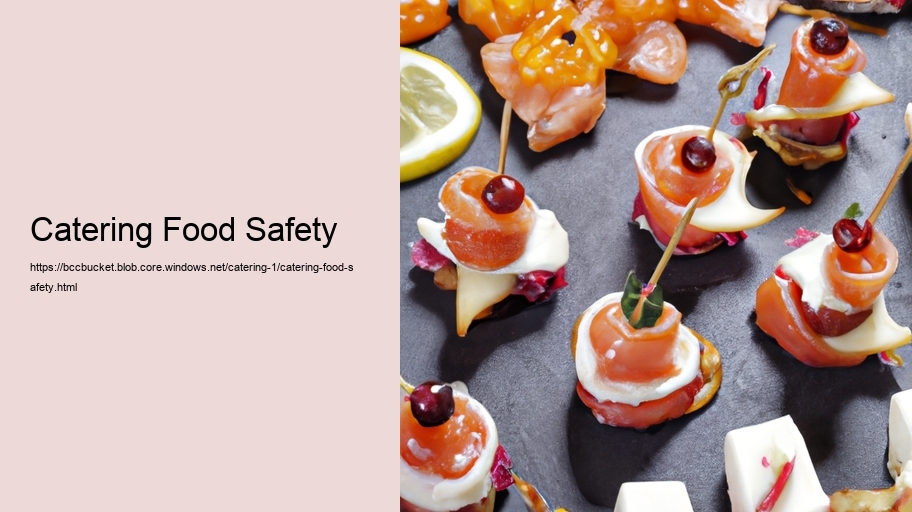Catering Food Safety: An Essential Guide to Serving Safe and Delicious Experiences
When it comes to catering, the tantalizing aromas, the artful presentation, and the fusion of flavors are often what capture our attention. However, behind the scenes, there is a critical aspect that is the backbone of any successful catering operation: food safety. Ensuring the health and well-being of guests is a responsibility that caterers must take seriously. This essay delves into the world of catering food safety, exploring why it matters, the challenges it presents, and the best practices for maintaining the highest standards.
Why Catering Food Safety is Paramount
Food safety in catering is not just a legal requirement; it's a moral imperative. The consequences of neglecting food safety can be severe, ranging from foodborne illnesses to fatal outcomes. When large groups are being served, the risk of cross-contamination or food poisoning increases, making strict adherence to safety protocols essential. Furthermore, the reputation of a catering business hinges on its ability to deliver safe experiences. A single incident of foodborne illness can cause irreparable damage to a caterer's reputation and future business prospects.
The Complexity of Catering Food Safety
Catering operations face unique challenges that distinguish them from standard restaurant services. Events may take place at various locales, from outdoor settings to venues without proper kitchen facilities. This mobility requires caterers to adapt their food safety practices to diverse environments. Additionally, the scale of catering can complicate matters. Serving hundreds or even thousands of guests multiplies the potential points of failure, from the preparation and cooking stages to transportation and final service.
Best Practices in Catering Food Safety
To mitigate these challenges, several best practices must be implemented:
Training and Education: Every staff member, from the executive chef to the servers, must be well-versed in food safety. Regular training sessions and certifications in food handling ensure that everyone is up-to-date on the latest safety protocols.
Temperature Control: The temperature danger zone, between 40°F and 140°F, is where bacteria can thrive. Caterers must be vigilant about maintaining proper temperatures during cooking, storing, and serving food.
Cross-Contamination Prevention: Separate equipment and utensils for different types of food, especially when handling raw and cooked items, are essential. Using color-coded cutting boards and knives can help reduce the risk of cross-contamination.
Personal Hygiene: Staff must maintain high levels of personal hygiene, including regular hand washing, wearing clean uniforms, and using gloves when appropriate. Ill staff members should never be allowed to handle food.
Safe Food Sourcing: Reliable suppliers who adhere to food safety standards ensure that the ingredients used are of the highest quality and safety. Traceability of food items can be crucial in the event of a foodborne illness outbreak.
Transportation and Storage: When transporting food to an event, maintaining the correct temperature and hygiene is critical. Proper storage facilities at the venue, such as hot holding equipment and refrigeration units, must be ensured before the event.
Allergen Management: With food allergies on the rise, caterers should have clear systems to manage and communicate about allergens. This includes proper labeling and separate preparation areas to avoid cross-contact with allergens.
Conclusion
Catering food safety is a complex but essential aspect of the catering industry. It requires diligence, attention to detail, and a commitment to continuous improvement. By prioritizing food safety, caterers can not only protect their guests but also elevate their brand to be synonymous with quality and care. The ultimate goal is to serve not just a meal, but a safe and memorable experience that leaves guests with a taste of excellence, free from the concerns of foodborne health risks.
